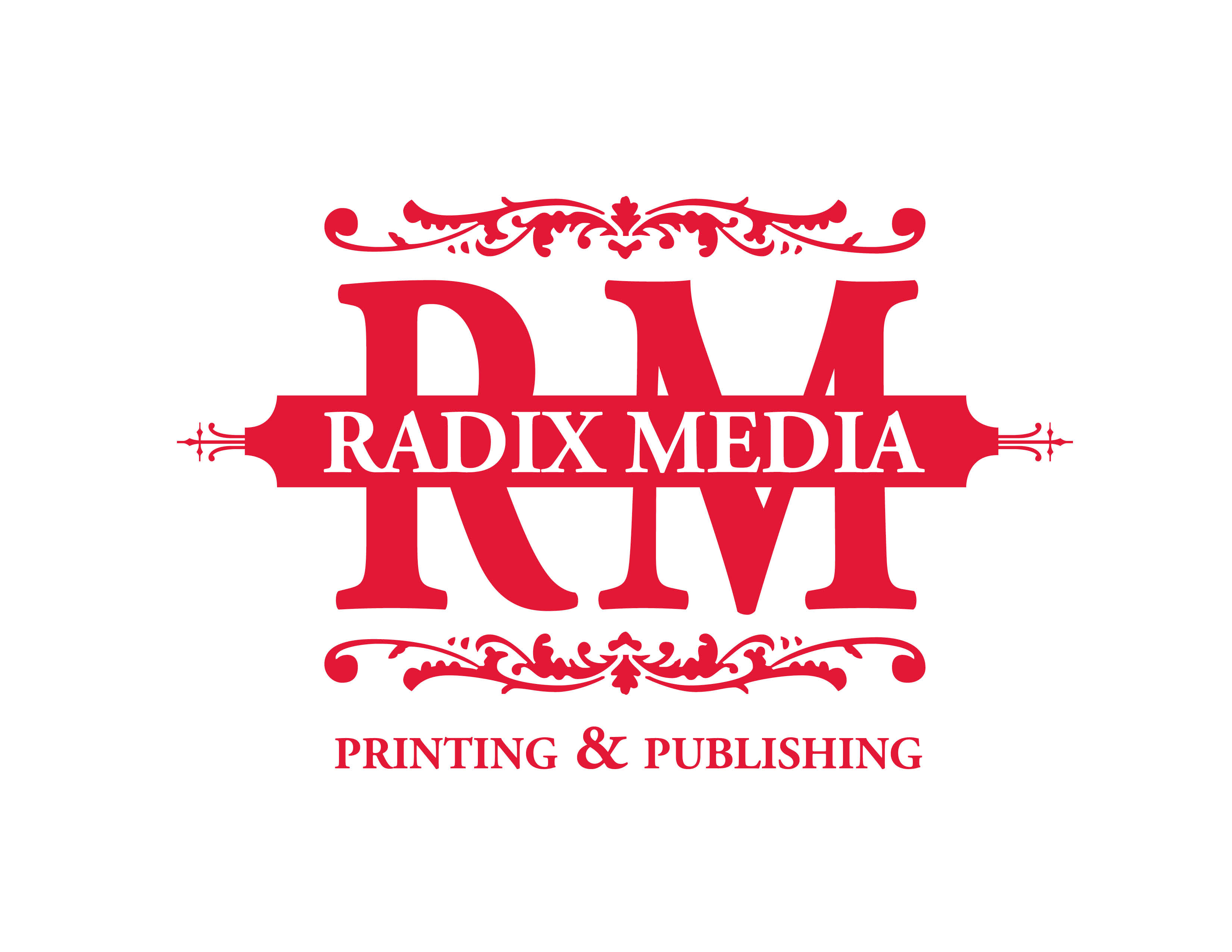ireside is a company headquartered in New York City that specializes in science fiction and fantasy. They began as a Kickstarter-funded project and the magazine was exclusively digital. Since then, it has grown to include a beautifully designed and printed quarterly edition. Fireside also publishes books and chapbooks as part of their larger publishing program. Their core values of paying contributors well make them stand out from other literary publishers, and their anti-fascism is front and center in whatever they do.
I spoke to Pablo Defendini, the company’s publisher and art director, about our overlapping values, accessibility in the publishing industry, and the future of the printed word.
Introduce Fireside to us and tell us what a typical day looks like.
Fireside is an independent publisher. First and foremost, we publish a short fiction magazine. The print edition of the magazine, which comes out four times a year, is called Fireside Quarterly; and the digital edition, which comes out monthly as an ebook to our subscribers and weekly to the world on our website, is called Fireside Magazine.
We mostly publish science fiction and fantasy stories, but we don’t limit ourselves to genre work: our motto is “No genres, no limits—just good stories.” As long as it’s a good yarn that moves us, we’re down with it. In the last year we’ve also started publishing some essays and poems.
Fireside Magazine started back in 2012 as a Kickstarter-funded print magazine. Our founding editor, Brian White, hired me to code their ebooks, and that developed into a friendship and a very fruitful working relationship. After the first three issues, we moved to publishing online only. In 2016, Brian stepped down as editor and publisher and named me publisher in his stead. We brought on Julia Rios to edit the magazine, and I focused on building Fireside from a side-hustle into a business.
Fireside has always been directly funded by its readers. Over the years, we’ve branched out to embrace crowdfunding platforms other than Kickstarter, such as Patreon and Drip, and ultimately we launched our own direct subscription offering (using Memberful) last year, when we returned to print with Fireside Quarterly.
We’re a remote-only organization, so I work out of a dedicated workspace in my home. My day starts early—I’m a new parent, so I need to get a jump on things before the little one takes up all my bandwidth. We run Fireside on tools like Slack, Submittable, Github, and Airtable. ZOMFG I live in Airtable, it’s so versatile and useful! We could have a whole other blog post just about Airtable.
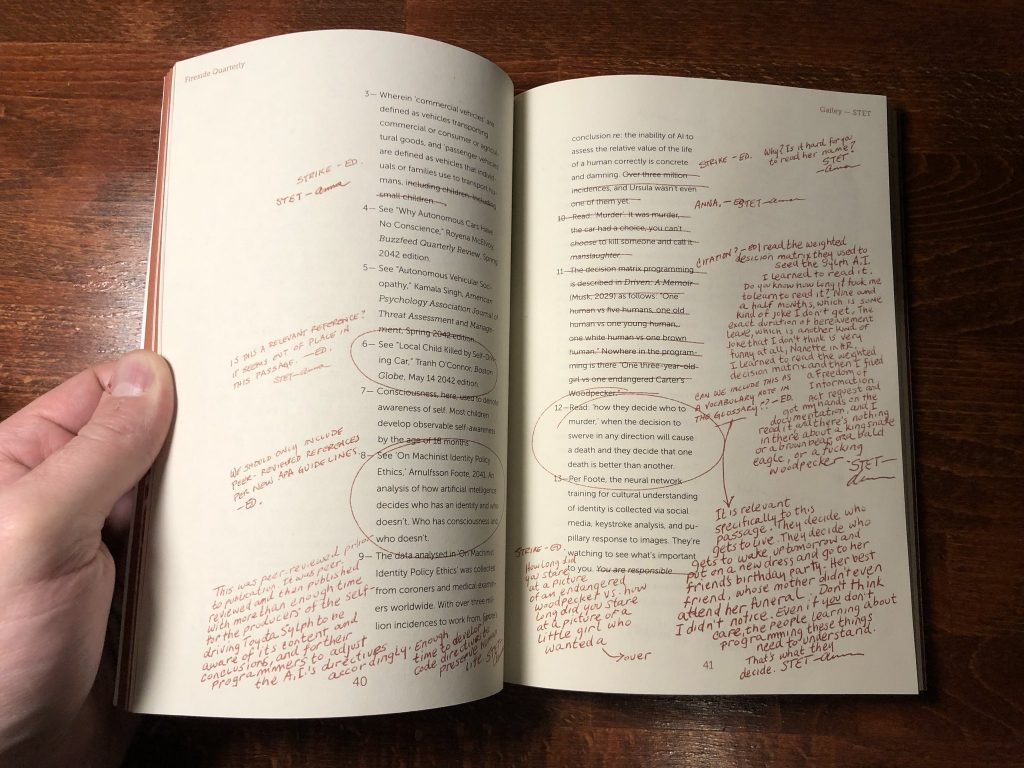 I found out about Fireside on Twitter, and the thing that really attracted me to the project is your dedication to paying writers and artists well, a value that we share with you in our own publishing projects. How do your core values affect what you look for, editorially?
I found out about Fireside on Twitter, and the thing that really attracted me to the project is your dedication to paying writers and artists well, a value that we share with you in our own publishing projects. How do your core values affect what you look for, editorially?
Fireside’s foundational value is fair pay for great work (you can see the rest of our core values here). Fireside Magazine is one of the highest-paying short fiction markets in the science fiction and fantasy genre field, and pays way more than the minimum pro rate as defined by SFWA, the de facto guild for science fiction and fantasy writers in the U.S.
We believe that the stories we tell each other shape culture, so the stories, essays and poems we publish always reflect our values in some way: by amplifying marginalized voices, discovering new authors, or publishing stories with messages that resonate with our convictions.
Sometimes this means publishing something like “The Secret Lives of the Nine Negro Teeth of George Washington,” by Phenderson Djèlí Clark, which aggressively and uncompromisingly subverts some of the the foundational myths of this country. Sometimes it just means publishing a story in which a giant refuses to fight a witch and instead finds a way to constructively help her out of her predicament, like in “Rab the Giant versus the Witch of the Waterfall,” by Brian M. Milton.
And every once in a while, we see our work made manifest in culture: way before Nike signed Colin Kaepernick as its spokesperson, we published Andrea Phillip’s “The Revolution, Brought to You by Nike,” in which an ad executive leverages the brand power of the footwear giant to bring down an authoritarian regime. We have it on good authority that lots of eyes at Nike saw the story when we first published it, so I like to think we helped Andrea galvanize Nike’s conviction, just a little bit.
Although you’ve grown since the ebook-only days, you still use Kickstarter for some projects, like the Hope in This Timeline chapbook we printed for you. Can you tell us a little more about how that project came about?
Frankly, it came about in part because we wanted to work with you! We like doing small experiments as a way to dip our toes in waters that might be new for us, and one of the things we want to start doing more of is working with other outfits along the publishing stack (printers, booksellers, etc) who share our values, and work at our scale, instead of always relying on huge corporate suppliers, or monolithic technology platforms.
Additionally, we hadn’t really done much with Kickstarter in a while, and we wanted to reinvigorate that relationship. Although Kickstarter is a relatively large company, their status as a Benefit Corporation means that their values hew very closely with ours: their corporate charter specifically requires them to put the independent creator community above all else—even their own shareholders.
Finally, the last few years have been rough if you’re anywhere on the left, politically. Hate and bigotry are on the rise—if you’re anything other than rich, white, and male, it can seem like the people in charge are straight-up out to grind you down. And while we consistently publish stories that provide comfort, hope, and positivity, we wanted to intentionally put out a project that explicitly spoke to those feelings, and uplifted them. So we chose a handful of our more recent stories, and packaged them up with new illustrations from Sara Eileen Hames, and built a campaign around them.
“We believe that the stories we tell each other shape culture, so the stories, essays and poems we publish always reflect our values in some way.”
Most days at the shop, the three of us are wearing our Fireside “Anti-Fascist Fiction Club” pins! It seems like you’ve gotten more political, both on your personal social media and in your messaging for the magazine. Why has it been important for you all to put that right out in front?
Because giving a damn, and standing for your convictions, is more important now than ever before in my lifetime! We all need to walk the walk, and make sure that we’re creating the world we want to live in, but talking the talk is important, too. By being overtly political, and telling everyone loud and clear where we stand on specific issues like healthcare, immigration, social justice, and anti-fascism, we’re planting a flag and helping hold space. We’re helping to make it okay for other people to espouse the same views, and loudly agitate for them, too. This might not seem like that big a deal here in New York, or in other liberal cities, but if you’re a Black kid in Boise, or a queer kid coming up in Añasco, it really matters to know that there’s other people who think like you, and that another world is possible.
Besides, over the past twenty or thirty years, the mainstream and alt-right have been very effective at pushing their agenda. But I’m firmly convinced that there’s more of us than there are of them, it’s just that they’ve managed to be really loud and obnoxious. Well, we can be loud, too—and we have more style, so we don’t have to be obnoxious.
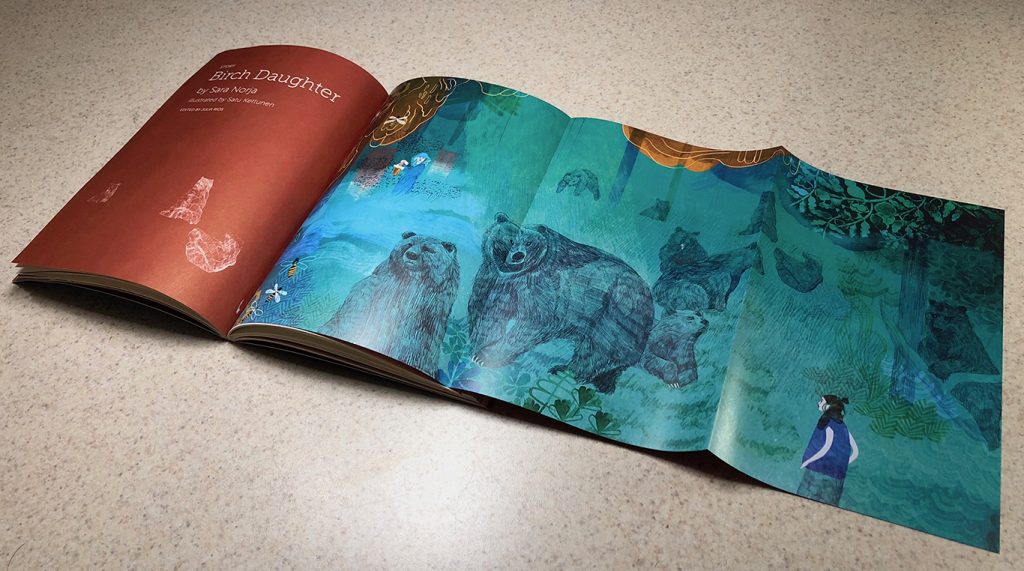 In addition to the beautiful print magazine, the web versions of the stories are also very lovely. How do you approach designing and laying out these words and images for the screen versus the page?
In addition to the beautiful print magazine, the web versions of the stories are also very lovely. How do you approach designing and laying out these words and images for the screen versus the page?
Giving a damn isn’t just something we reserve for the political space—it’s built into how we approach everything. We publish such amazing work, from such incredible creators, and we have an obligation to present that work in the best way we possibly can. In print that means ensuring that our magazine is beautifully typeset, and that the illustrations are printed as nicely and as large as we can afford. On the web, we make sure that our stories are also nicely typeset, and presented in a clean, clutter-free reading interface that doesn’t bombard our readers with ads, or social media barnacles, or any of the junk that clutters up the sidebars of other online magazines. I want Fireside Magazine to be a joyful, easy reading experience for everyone—including myself!
I came up in the publishing industry just when the Kindle was taking off, and back then, the big “fight” was print versus ebooks: which one is better, which one would kill the other. I never looked at it that way. To me, each medium has unique properties, and offers unique opportunities. So we try to do things with the printed Quarterly that we can only do on paper, and by the same token, we try to do cool stuff on screens that you just can’t do in print.
Sometimes, we come across a piece that allows us to really push the envelope on this stuff, and we have a lot of fun with it. We published a poem by Amal El-Mohtar in early 2018, which we paired with illustrations by Molly Crabapple—Amal had some Arabic words in her poem, and we had Molly create some Arabic script that fades in when the reader rolls over the words, among other cool things. Last October, we also published a gut-punch of a story by Sarah Gailey, which looks very different in print and online. You can read more about these types of highly art-directed pieces here.
“If you’re a Black kid in Boise, or a queer kid coming up in Añasco, it really matters to know that there’s other people who think like you, and that another world is possible.”
You’ve been doing lots of cool things with accessibility lately, like recording audio versions of stories from the magazine. How do innovations like this affect the state of publishing? And what do you think it will look like five or even ten years from now?
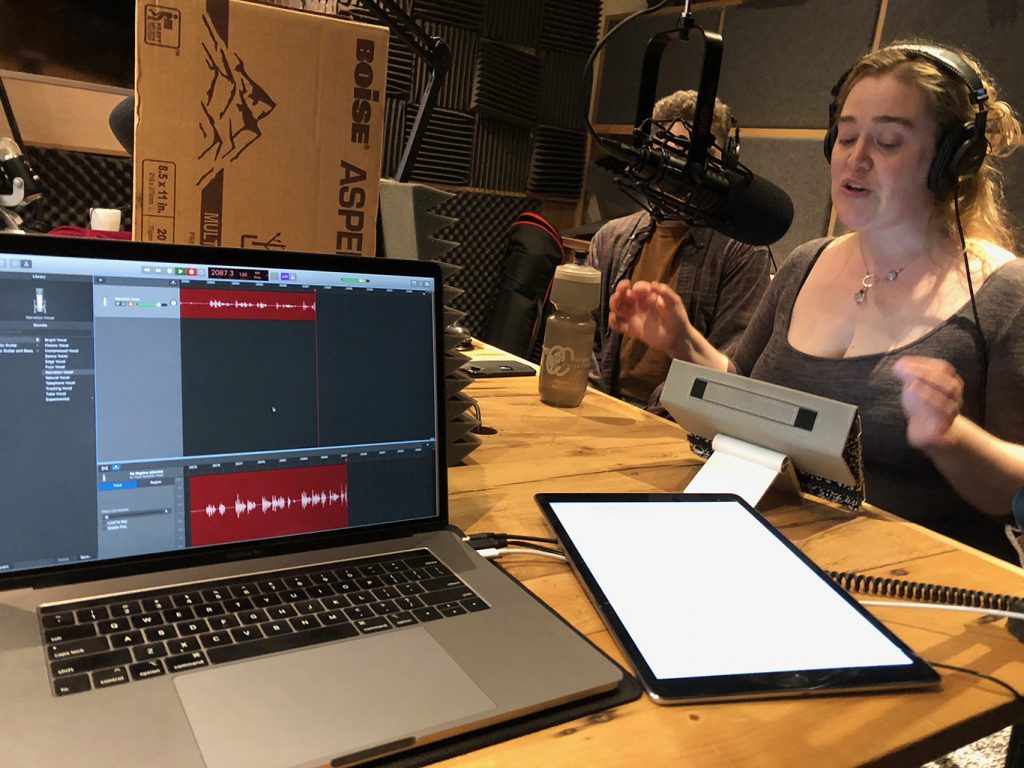 We started to record audio versions of our stories because from an accessibility standpoint, it’s kind of table stakes. If we want to be truly inclusive, we need to also serve those who have trouble with visual media. It’s just that audio production adds a level of complexity to our workflow, and it is, of course, also more expensive, especially when you’re committed to paying people fairly. So it took us a little while to get there but I’m so glad we can offer that to our audience now.
We started to record audio versions of our stories because from an accessibility standpoint, it’s kind of table stakes. If we want to be truly inclusive, we need to also serve those who have trouble with visual media. It’s just that audio production adds a level of complexity to our workflow, and it is, of course, also more expensive, especially when you’re committed to paying people fairly. So it took us a little while to get there but I’m so glad we can offer that to our audience now.
As for the future, I think the written word is here to stay. Reading and writing is a foundational human technology, and so much of our intellectual and cultural life starts as words. Every movie, podcast, television show, immersive multimedia virtual reality experience—everything—starts as words on a page, even if it’s just a scribble on a napkin. Writing is the easiest, most accessible way for us to organize our thinking and to share our ideas. So I’m not worried about the future of the written word, at all.
But I think the way we consume the written word is changing, and we’re broadening its reach. Audio is an excellent example of that, but hardly the only one. For the publishing industry, the outlines of what’s possible have been constrained by the limits of the industrial processes that publishers have relied on for the last few centuries—the reason a novel is the length it is, isn’t because that’s some sort of natural shape for a long-form narrative, it’s because that’s how many words you could print and bind and package and ship out efficiently, and still make money.
And there’s still a place for that, but there’s also so much more you can do. It’s similar to how television writers have become unfettered by the constraints of a twenty-two 48-minute episode season in a world where Netflix will allow them to make a show of whatever length they need in order to best serve the story. We can publish words into printed books and into ebooks, but also into websites, email newsletters, apps, text messages, VR headsets, environmental displays…you name it. It’s just a question of digging into these media and figuring out what type for words they’re best suited for.
In fact, that comes all the way back to print, for me: once you start thinking about what different media can bring to the table when you’re thinking about how to present a story, you start thinking of print differently too. You start thinking about what are the unique properties of print, what can you only do on the printed and bound page that you can’t do elsewhere, and you start optimizing for that.
What’s next on your plate? There’s another issue that’s about to drop soon, right?
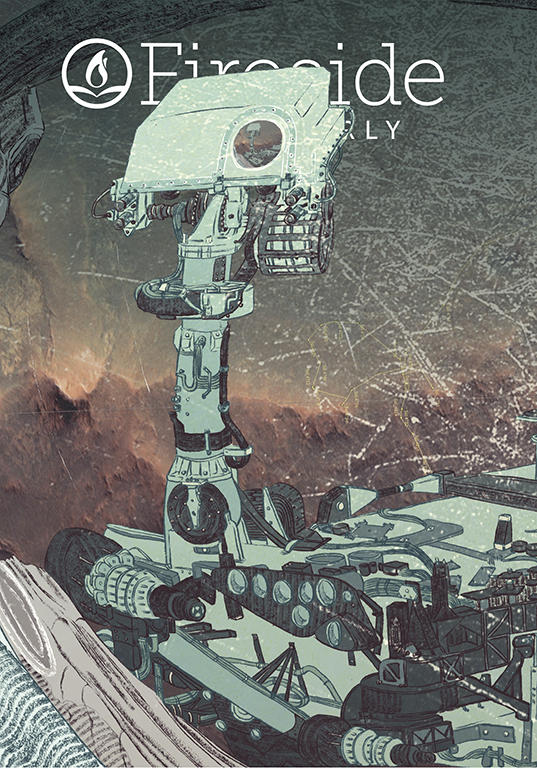 That’s right! Our April issue of Fireside Quarterly is about to hit subscribers’ mailboxes. The cover features a gorgeous illustration by Cat O’Neil for a short story by Beth Goder about an absolutely adorable, sentient Mars rover. I try not to play favorites, but this one was just so much fun to read, art direct, and publish, and I can’t wait to share it with our readers!
That’s right! Our April issue of Fireside Quarterly is about to hit subscribers’ mailboxes. The cover features a gorgeous illustration by Cat O’Neil for a short story by Beth Goder about an absolutely adorable, sentient Mars rover. I try not to play favorites, but this one was just so much fun to read, art direct, and publish, and I can’t wait to share it with our readers!
We’ve also started publishing stories in Spanish, from Latin American and Latinx authors, and in addition to publishing both the original Spanish and the English translation in the print magazine, we’ve made it so that the stories in Spanish are first-class citizens on our site, rather than an afterthought tacked on to an English-dominant website. When you click or tap into a Spanish story on the Fireside site (like the excellent ‘Parasitismo,’ by Alberto Chimal), the entire site flips into Spanish. As someone who was raised bilingual, I want people who only speak Spanish to feel just as at home on our site as English speakers do, so we worked hard to make sure that was the case (naturally, English speakers have the ability to toggle the English translation of each story).
How can people stay up to date with Fireside and support the work you do?
To stay up to date on everything we’re up to, you can follow us on Twitter at @firesidefiction, and you can sign up for our newsletter. We send out a weekly recap of the stories and essays we’ve published, as well as news about our books, upcoming events, and other good stuff.
The absolute, very best way to support Fireside is to subscribe to our print magazine, Fireside Quarterly. We make money off of book sales, merchandise, and other things, but the steady, recurring revenue from our subscribers is what allows us to make projections and plan for healthy, sustainable growth.
Credits: All photos by Pablo Defendini. The illustration on the April 2019 cover was done by Cat O’Neill.
—
Community Spotlight is a blog series that seeks to connect people and build power. Each post will feature a person or organization doing great work in their community and fighting for a more just world. We interview writers, illustrators, podcasters, filmmakers, activists, and more. Subscribe today and let’s start building together.
